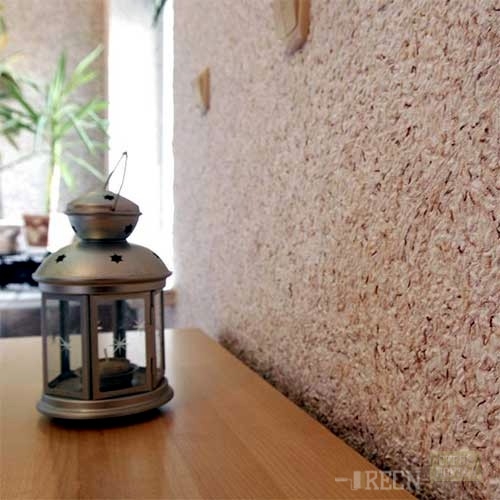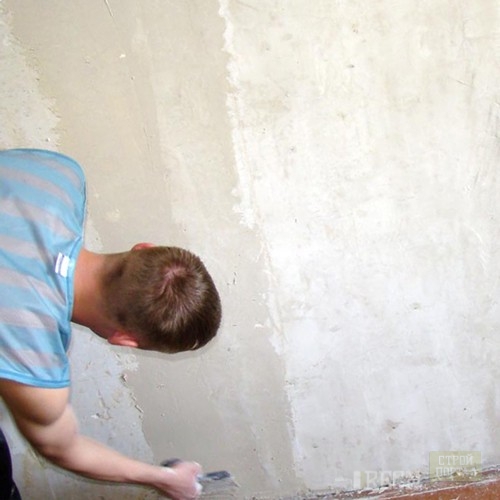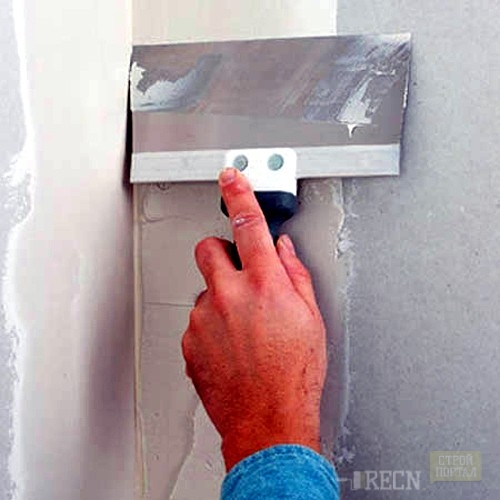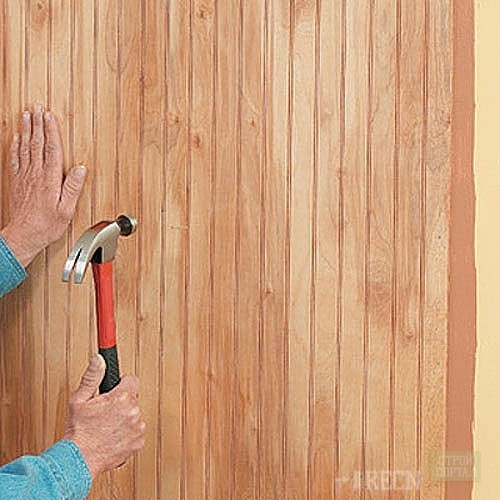
How to prepare walls to apply liquid wallpaper Wallpaper
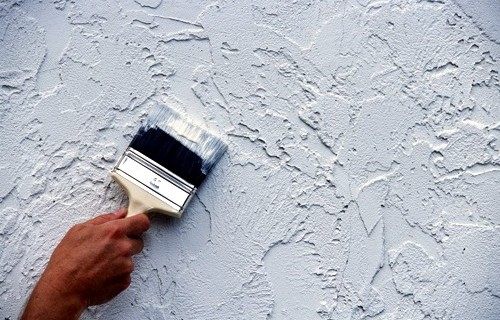
Different techniques for finishing walls inside the premises are currently not limited to the application of paper wallpaper. Liquid wallpaper is popular. But not every person who has decided to cover the walls with liquid wallpaper , He knows how to properly apply.
Content
Many believe that liquid wallpaper and decorative plastering of the wall is the same thing. Sometimes even in small building stores, sales consultants do not fully know all the technology of preparing walls to cover and can give incorrect recommendations.
In fact, the difference between plaster ordinary and liquid wallpaper is. And it is that for applying decorative plaster on the wall, it is pre-prepared, and when applying liquid wallpaper, the wall is also prepared, but it takes not so much time.
First you need to understand what this finishing material is. Liquid wallpaper is one of the varieties of decorative plaster. Their composition includes cellulose fibers, which are considered waste from the processing of wood and silk fiber. In order for liquid wallpaper a beautiful aesthetic look, dyes and other decorative elements are added to them: granules or sparkles. As a fixing material with the surface, special CFM glue is served. A mixture is applied to the wall using special tools: peeled, spatula or graters according to the principle of applying plaster.
The prerequisite for the preparation of walls under liquid wallpaper is to withstand the perfectly monophonic surface of the wall. This is due to the fact that the liquid wallpaper is a special mixture, which consists of several components. The mixture is divorced by water according to the instructions so that it turns out a thick mass, something like a consistency on plasticine. Here is such a mass and should be applied on a pre-prepared wall.
How to prepare the wall
If you bought a non-residential premises And you need to make repairs, to start correctly prepare the walls. Considering the fact that liquid wallpapers have a very high price, then, accordingly, the wall should be perfectly smooth. If there are dents and depressions on the wall, then a greater consumption of material will be required.
General recommendations and practical tips on the preparation of the surface to apply liquid wallpaper:
- remove old paint, glue and remnants of wallpaper;
- remove all nails, screws, leave only those that will be used after repair;
- clean the wall;
- treat primer liquid;
- paint with paint wall in light color (preferably white) twice;
- if the wall remains rust from old screws and nails, then yellow places are better covered with special paint. It is impossible to use water-emulsion paint, as it will temporarily close the yellowness, and it will again manifest on the wall;
- it is impossible to paint the wall of a nitrogen or oil, because then the wall will not "breathe";
- to the surface painted in a light color had a good grip with liquid wallpaper, a little PVA glue is added to the paint.
Liquid wallpapers are applied to such surfaces:
- Concrete "naked" surfaces.
- Walls with putty.
- Brick wall with stucco.
- Brick walls of old houses.
- Wooden surfaces, including Phaneur, MDF and Walp Walls.
- Painted surface paints.
- Places having protruding wooden and metal details.
Prepare a concrete wall
If your wall is completely from the "naked" concrete or has a plastered surface, then apply a special paint - water dispersed, no need. This is due to the fact that such surfaces absorb a lot of moisture, and even if you apply 10 and more paint layers, the wall will not look perfectly white. In order to achieve the effect of a smooth light tone of the wall, it is applied to a putty from the gypsum mixture. Such a building mixture will allow to align the surface of the wall and close all the "breathable" sites. It is necessary to apply a layer of the mixture not thin, but it is quite tight so that all errors are closed.
And only after the putty is completely dry, the wall is covered in several layers of the primer mixture and only then paint the water paint into three layers.
It happens that the primers are currently not, and you need to process the wall. In this case, the wall can be handled by paint by adding a little PVA glue into it, in the ratio: two parts of the paint, one part of the glue.
Helpful advice: If the wall has a loose surface, it crumbs and lifts, to apply any finishing material will be more difficult. In this case, special primer mixtures are used.
Preparation of walls of old houses
Applying liquid wallpapers on the walls in old houses, in the so-called "Khrushchev" and "Stalinki" requires a more attentive approach due to the fact that builders are unknown, from which material was built at home. Specialists in applying liquid wallpapers suggest that such walls in old houses can be unpredictable, as it is not known where a yellow spot or other divorces may appear. In order not to turn the entire work done, the wall must be prepared more carefully.
Wall Preparation Plan:
- Impust the surface with a primer mixture or special impregnation.
- After a complete drying of the mixture, the wall is covered again in two layers of the primer mixture.
- After drying all the layers, the wall twice is painted with water dispersive paint to get a smooth light shade.
In some cases, experts can recommend to cover the walls before applying liquid wallpapers not with water-emulsion paint, but an alkyd, which will serve as a protective layer, as well as the usual primer mixture.
Preparing the walls of plasterboard
Perhaps the only popular building material is plasterboard. It is often used for interior decorations. Sheets are fairly easily attached to the wall with the help of guide profiles and self-tapping screws, the joints are closed with plaster mixtures.
When it is necessary to apply wallpaper on a wall of plasterboard, often inexperienced masters are ochpuck only the joints themselves. In fact, when applying liquid wallpapers on the walls, without impregnation with water-repellent means on the entire surface, it is possible to obtain the opposite effect in the form of white seams at the joints of the connection of two layers of drywall. So that this does not happen, you should not save your funds, and it will be better if the spacion mixture is a thin layer to cover the entire surface of the plasterboard wall. After the wall applies white paint water distribution. Thus, the surface preparation will be observed before applying liquid wallpaper.
And another common mistake of construction masters: they believe that the wall of the drywall, which is already applied to the layer of putty, has a bright shade, and therefore it does not need to be painted. This is not true. Such a surface is not considered to be resistant to moisture, therefore it is necessary to add glue into the paint. One part of the glue is added to three parts of the paint.
Special attention should be paid to the fastening element located at the junctions of drywall. Self-tapping screws, if moisture gets into them, can start rust, and yellow spots will appeal out. Such a problem is solved like this: for such work, you need to purchase special galvanized screws that will not rust. For the price they will be slightly higher than ordinary. If the wall is mounted in advance with the help of conventional screws, you need to trace them to be well "recessed" into the wall. The caps of ordinary screws are covered with oil paint and additionally with a layer of putty.
If there are so-called "leaks" of fluid on the wall, the wall was flooded, such a surface is considered to be problematic. In places where the liquid has been regulated, dark spots will eventually appear over time. Previously, copper cunery coped with such a problem. Now such places are treated with special paint on an oil basis.
Preparation of other surfaces
It is necessary when to apply liquid wallpaper will be on non-traditional surfaces:
- on wooden;
- contrast painted;
- any metal surfaces.
Before applying liquid wallpapers on a wooden wall, you need to make sure that it is well attached. This is the main rule, because the wooden surfaces are moisture on them, deform. It is also necessary to take into account the fact that, the thinner of the wooden surface, the higher the risk of its deformation.
In order to prepare the wall to apply wallpaper, the wooden surface is pre-treated into several layers of primer liquid and paint (oil or water distribution).
The wall having a contrasting color or metal elements (air duct, fittings, etc.) is pre-treated with oil-based paint. If you do not process surfaces, they will show rust stains.
How to prepare the walls to lay liquid wallpaper, you can see this video:




